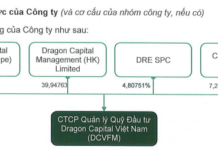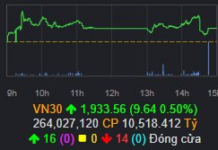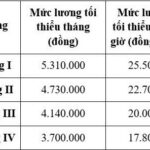
The Bank of Japan’s (BOJ) decision to raise interest rates sent shockwaves through the Japanese stock market, causing a ripple effect of declining prices for cryptocurrencies and other risky assets in the country. This sudden move also pushed spot gold prices up by 1.9% to nearly $2,460 per ounce. However, as panic spread across Asian and European markets, gold prices reversed course and fell sharply in line with other risky assets.
Despite a recovery in the following session, spot gold prices ended the week almost unchanged from the previous week, settling at $2,427.73 per ounce, while December 2024 gold futures traded at $2,473.40 per ounce.
In the domestic market, SJC gold bar prices on August 11 (buy-sell) stood at 76.5-78.5 million VND per tael, down about 2 million VND from the previous week’s range of 78.3-79.8 million VND per tael. SJC 9999 gold rings were priced at 76,250,000-77,700,000 VND per tael (buy-sell), almost unchanged from the previous week’s range of 76,150,000-77,550,000 VND per tael.

Spot gold price movement.
According to the latest Kitco News survey, with the new data and developments, most analysts and experts predicted that gold prices would move sideways in the coming week, while the majority of traders anticipated an upward move.
“I remain neutral on gold for the coming week,” said Colin Cieszynski, Chief Market Strategist at SIA Wealth Management. “I just get the sense that after 10 days of volatility, the market may settle down a bit next week ahead of the start of the Democratic convention the following week.”
Marc Chandler, CEO of Bannockburn Global Forex, also expected gold to trade sideways, at least in the early part of the coming week. “I think the market may have overstated the possibility of a 50-basis-point cut from the Fed, let alone an inter-meeting emergency cut,” Chandler said. He pointed to the highlight of the coming week, the US CPI report for July. “It is likely to show no change from a year ago, so the Fed will only cut rates by 25 basis points in September,” Chandler noted. “Note that the PBOC [People’s Bank of China] did not buy gold for the third month in a row in July after 18 months of continuous purchases,” he added. He also advised, “There is still a lot to wait for: Tensions in the Middle East and many still predict an Iranian attack on Israel, which would at least initially support a higher gold price if it occurs.”
Adam Button, Currency Strategist at Forexlive.com, also remained neutral on the outlook for gold prices going forward. “We’ve seen a speculative washout. I think that sets the stage for a quiet week or a slight gain. But watch the US CPI report closely because it is likely to define the inflation picture,” Button commented.
However, several experts maintained a bullish outlook on the potential for price increases.
Adrian Day, CEO of Adrian Day Asset Management, anticipated higher gold prices, noting, “Market expectations for the Fed to cut rates keep changing, and so does gold.” “But there is no doubt there will be at least one rate cut coming, and that will be the signal for North American investors to pay more attention to gold, especially if the US economy shows signs of slipping into recession.” “So far, gold has been driven higher despite very little interest from Western investors,” he added, “but the Fed cutting rates and other central banks already cutting rates will cause investors to turn their attention back to gold.”
James Stanley, Senior Market Strategist at Forex.com, also expected gold prices to rise in the coming week. “The bulls are still in control, and they proved that very clearly last week,” Stanley said. “After a sharp sell-off on Monday and Tuesday, buyers stepped back in strongly later in the week.” However, he cautioned that the risks for gold prices included US Treasury yields and the upcoming US CPI report, and he didn’t foresee gold prices breaking above $2,500 per ounce.
Everett Millman, Market Analyst at Gainesville Coins, predicted a favorable August for the gold market due to seasonal factors, despite the geopolitical tensions and turmoil in other financial markets. Millman attributed the sharp decline in gold prices at the beginning of the past week to the widespread sell-off in other markets, which forced hedge funds and asset management companies to sell something to address capital issues, and liquid gold was an easy choice in this situation.
According to Millman, seasonally, August is one of the best months for gold, and the market is now looking ahead to the Fed’s first expected rate cut in September.
Overall, the gold market can change rapidly, making it challenging for traders to choose the right direction. “With gold, you’re living day by day, not week by week,” said Sean Lusk, co-director of commercial hedging at Walsh Trading. “With these moves and market changes…check your buy/sell position every four hours.”
The latest survey results showed that out of 10 Wall Street analysts polled by Kitco News, 60% predicted that gold prices would trade sideways in the coming week, 40% expected prices to rise, and none forecast a decline.
Meanwhile, out of 210 retail investors polled on Main Street, 130 people (62%) expected gold prices to rise in the coming week, 45 people (21%) predicted a decline, and 35 people (17%) anticipated a sideways market.

Kitco News survey results on gold price outlook for the week of August 12-16.
The fear of a US economic recession intensified last week, causing a broad-based sell-off. In this context, the data for the coming week is eagerly awaited.
The most important events for gold traders in the coming week include the US PPI index for July (released on Tuesday, August 13), followed by the US CPI (Wednesday, August 14), US retail sales and weekly unemployment claims (Thursday, August 15), US housing starts and building permits for July (Friday, August 16), and the preliminary August survey of US consumer sentiment by the University of Michigan. Along with these, precious metal investors will also pay close attention to speeches by Fed speakers, including Bostic on Tuesday, Musalem and Harker on Thursday, and Goolsbee on Friday afternoon.
Reference: Kitco News
Market Update on February 3rd: Crude oil, gold, copper, iron and steel, and rubber all decline together.
At the close of trading on February 2nd, the prices of oil, gold, copper, steel, rubber, and coffee all saw a simultaneous decrease, with iron ore hitting a two-week low.








































